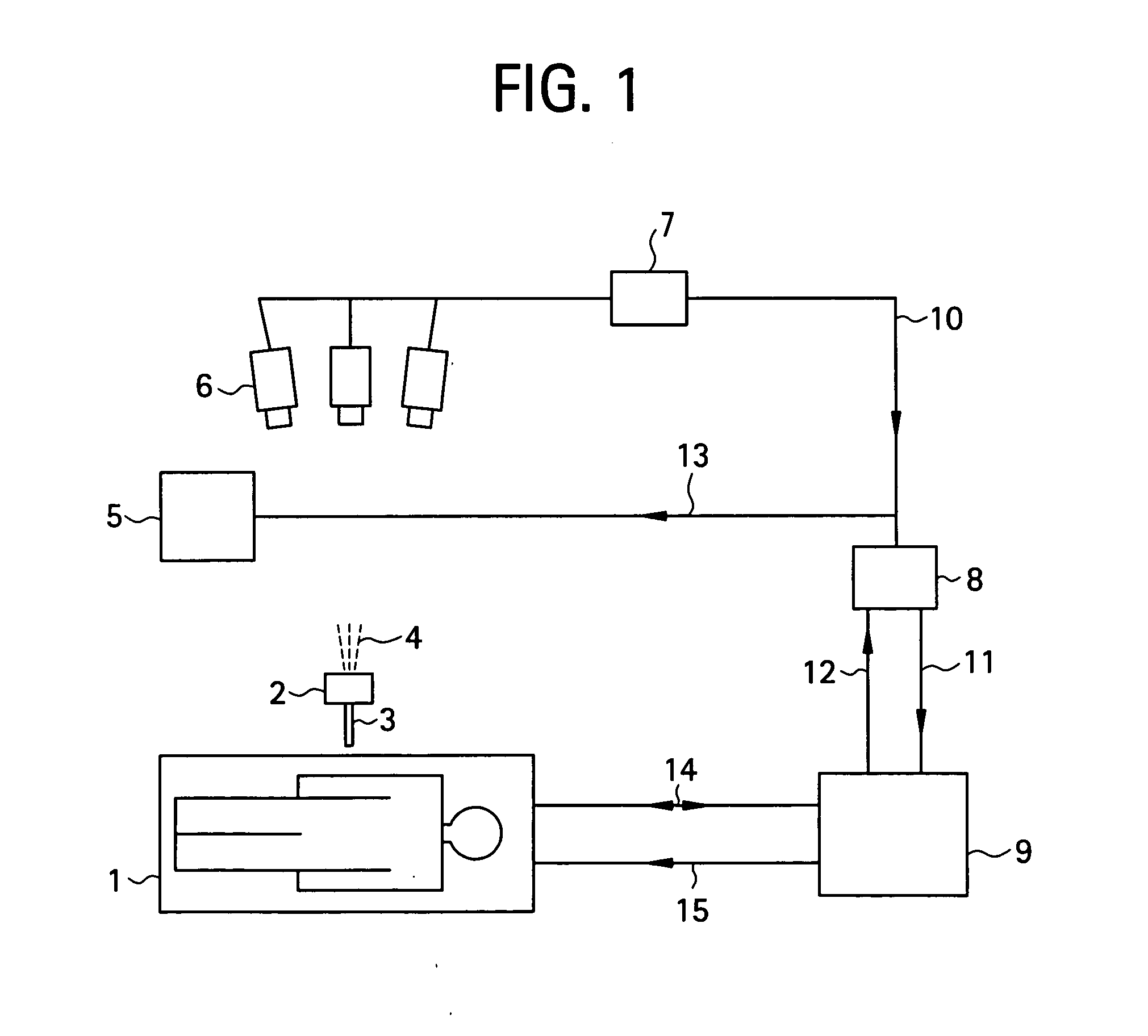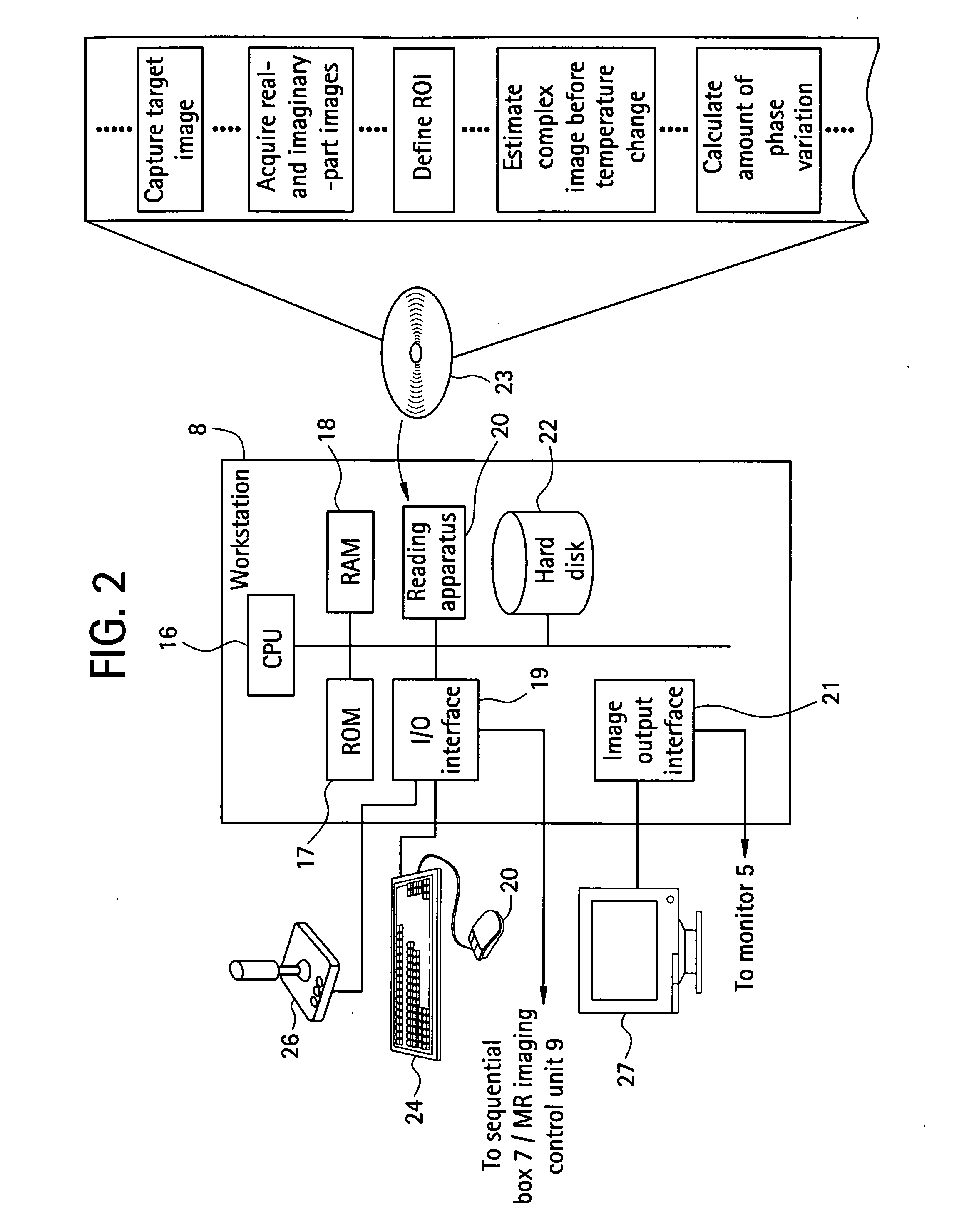Self-referencing/body motion tracking non-invasive internal temperature distribution measurement method and apparatus using magnetic resonance tomographic imaging technique
a technology of magnetic resonance tomography and internal temperature distribution, applied in the direction of measuring using nmr, instruments, magnetic variable regulation, etc., can solve the problems of micro coils, difficult quantitative temperature control, significant correlation of the reliability of estimated temperature values, etc., to achieve optimal heating control and enhance the therapeutic effect of thermotherapy
- Summary
- Abstract
- Description
- Claims
- Application Information
AI Technical Summary
Benefits of technology
Problems solved by technology
Method used
Image
Examples
embodiment 1
[0035] To begin with, a configuration of a medical MRI apparatus etc. used in the present invention is shown in FIG. 1. The MRI apparatus is attached with an optical positioning apparatus, and infrared radiation 4 emitted by the optical positioning apparatus 2 is imaged by a video camera 6 mounted over the MRI apparatus main portion. The infrared radiation captured by the video camera 6 is converted into a position control signal 10 by a sequential logic box 7 for calculating a position of a probe 3 in a heating needle or the like attached to the optical positioning apparatus 2, and sent to a workstation 8. A personal computer can be employed as the workstation 8. The position control signal 10 is transmitted to an MR imaging control unit 9 via the workstation 8 as an imaging plane adjusting electric signal 11 for controlling an imaging plane. The MRI apparatus main portion 1 and MR imaging control unit 9 communicate RF signals 14 and gradient pulses 15 for capturing a phase distrib...
embodiment 2
[0058] The configuration of a temperature measurement apparatus in accordance with the present embodiment is similar to that of Embodiment 1.
[0059] An amplitude image, a phase image, a real-part image and an imaginary-part image obtained from a complex image captured in one plane including a human liver are shown in FIGS. 5(A)-5(D), respectively.
[0060] In Embodiment 1, a phase image before a temperature change is estimated from a reference phase image after a temperature change, and a phase distribution may contain a portion in which phase transition from −π to π occurs. Thus, if phase transition occurs in the vicinity of a portion at which a temperature change takes place, i.e., in a portion surrounding the region of interest, a phase distribution in a portion surrounding the region of interest becomes rough. Then, an estimation error increases in estimating a phase distribution in the region of interest from a phase distribution in a portion surrounding the region of interest at...
embodiment 3
[0064] The configuration of the temperature measurement apparatus in accordance with the present embodiment is similar to that in Embodiments 1 and 2.
[0065] Since in a measured real-part image and a measured imaginary-part image, fat tissue etc. having a high water content is bright and bones etc. having a low water content is dark, smoothness of the signal distribution may sometimes be corrupted by brightness. Now normalizing a measured real-part image and a measured imaginary-part image by dividing them by an amplitude A2 on a pixel-by-pixel basis in the aforementioned Embodiment 2, S2 / A2=cos φ2+j sin φ2 is obtained, in which the right-hand side is expressed only by cos and sin functions. In other words, a real-part image and an imaginary-part image independent of a distribution of brightness are obtained. By using thus-normalized real-part and imaginary-part images, still more accurate estimation of real-part resonance signals and imaginary-part resonance signals in the region o...
PUM
 Login to View More
Login to View More Abstract
Description
Claims
Application Information
 Login to View More
Login to View More - R&D
- Intellectual Property
- Life Sciences
- Materials
- Tech Scout
- Unparalleled Data Quality
- Higher Quality Content
- 60% Fewer Hallucinations
Browse by: Latest US Patents, China's latest patents, Technical Efficacy Thesaurus, Application Domain, Technology Topic, Popular Technical Reports.
© 2025 PatSnap. All rights reserved.Legal|Privacy policy|Modern Slavery Act Transparency Statement|Sitemap|About US| Contact US: help@patsnap.com



